May 8th, 2017 in Anime by facade

When Japan’s animation industry didn’t have its very own Studio Ghibli, animators took cue from Western classics. They tried to get ideas from pre-existing tales and create their own twists in it in order for the stories to appeal to the Japanese audience. One such classic that Japanese animators tried to port to Japan is Jack to Mame no Ki (Jack and the Beanstalk), which was first published in 1734.
Japan’s version of Jack and the Beanstalk is interesting take on the Benjamin Tabart story. After Jack was conned into swapping his family’s only cow for a handful of beans, he plants them and realizes the next day that they yielded a tall, magical vine that rises through the sky. Climbing the beanstalk, Jack discovers an enchanted world ruled by the kind and beautiful Princess Margaret. Margaret has an unusual love interest in the form of Prince Tulip – an unattractive and brash fellow. As the story unfolds it is apparent that the Princess is in fact under a spell cast by an evil witch called Madam Noir. This spell has left the Princess in awe of the vulgar Prince Tulip who she is set to marry. The Prince, as the story reveals, is the witch’s very own son. Upon uncovering the plot, Jack leaps to the defense of the Princess. (more…)
April 23rd, 2017 in Anime by facade
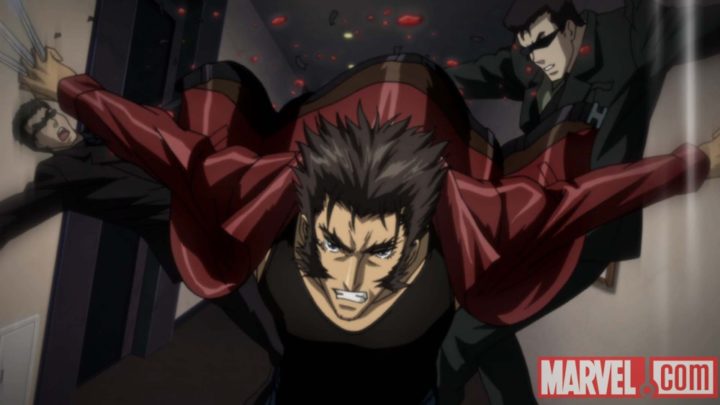
You only have to look at the box office to see that there’s no shortage of Western adaptations of (much better) anime properties. Ghost in the Shell is just the latest anime classic to get brought to Western shores. While that movie was a disappointing (but visually appealing) mess that doesn’t hold a candle to the original, it still got us thinking about the times when Japan flipped the script and tried their own hands at popular Western franchises. Here are five times it happened—and the results were actually pretty good.
The Animatrix
The sole non-comic adaptation on this list, The Animatrix brought some of the biggest names in animation together at the absolute peak of the Matrix’s popularity for an anthology film that still remains impressive today. The film featured direction by Shinichiro Watanabe (Cowboy Bebop), Mahiro Maeda (Gankutsuou: The Counte of Monte Cristo), Peter Chung (Aeon Flux), Takashi Koike (Redline), and Yoshiaki Kawajiri (Ninja Scroll). With such an all-star team behind it, it’s no surprise that the film was a success and helped to lay the foundation for many of these director’s future works, notably Koike and Kawajiri. The two Second Renaissance films in particular do a great job of expanding the Matrix mythos and further explain the circumstances that led to the rise of the robots and creation of the Matrix. (more…)
March 23rd, 2017 in Akagami no Shirayuki-hime by The Droid
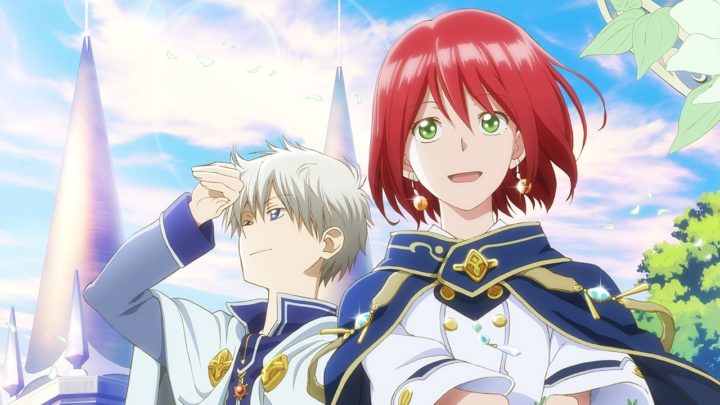
Do not let the title of this show fool or throw you. “Snow White with the Red Hair” (“Akagami no Shirayukihime”) only has the lead character share the name (and not really that); beyond this vague reference, she is her own woman. Shirayuki is a normal citizen of the kingdom of Tanbarun. Well, if you consider an herbalist ‘normal’; it is a rather rarified vocation. She has another unique feature: her red hair…which we already mentioned. When the first prince of Tanbarun, Raji Shenazard, orders her to become his concubine, rather than agreeing to this, she cuts her hair and escapes to the neighboring kingdom of Clarines. On her way there, she meets and befriends Prince Zen Wistalia and his two aides, Mitsuhide Lowen and Kiki Seiran (but obviously does not know this when they first meet). (more…)
Tags: Drama, Fantasy, Romance, Shoujo
February 15th, 2017 in Monogatari by The Droid
I did not know that this was part of a larger grouping of stories, referred to as the “Monogatari” (“Story”) series. I came in on Series #9 “Hanamonogatari” with a concurrent viewing of #11 “Owarimonogatari” (review on that later. Maybe). It’s just that they are very annoying both in presentation and content.
If I had watched them from the beginning, a lot of what transpires in this one would potentially make better sense, but it suffers the same problem as “Mekakucity Actors” or parts of “Penguin Drum”. But I get ahead of myself. The plot contends itself with Suruga Kanbaru (left), as she begins her third year in high school. She deals with her left hand that had been turned monstrous through the use of her mother’s monkey paw charm. After hearing rumors from Ougi Oshino of a Devil that can solve one’s problems, Suruga sets out to find this person. She secretly fears that this person is her. However, she soon discovers that the Devil is her former basketball rival from junior high, Rouka Numachi (right). (more…)
Tags: Comedy, Mystery, Romance, Supernatural, Vampire
February 8th, 2017 in Shimoneta by The Droid
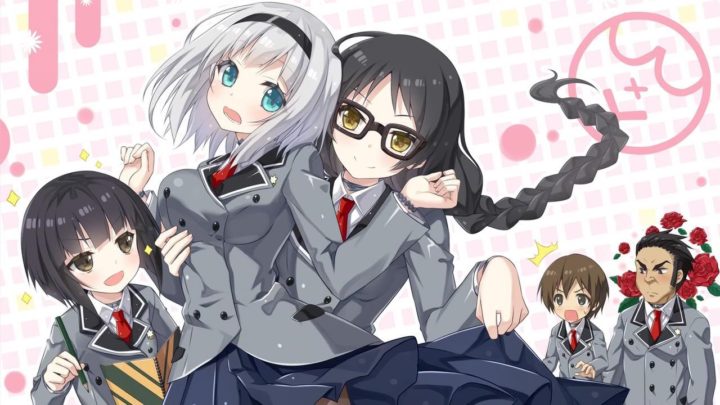
Another of those off the hook shows, the capaciously titled “Shimoneta: A Boring World Where the Concept of Dirty Jokes Doesn’t Exist” (“Shimoneta to Iu Gainen ga Sonzai Shinai Taikutsu na Sekai”) also really takes the concept of an alternate universe to…uh…an alternate universe. In future Japan (in trying to puzzle together the timeline, it could be, like, 2056), the Morality Police have cracked down on any and all things prurient and immoral, so no hentai, no ecchi, no eroge games, not even certain words are allowed in this squeaky clean and spiritually pure society.
Everyone wears a ‘morality collar’ (for wont of a better term), which is called a Peace Maker, that analyzes every spoken word for any action that could break the law. A new high-school student named Tanukichi Okuma (Mr. Shocked back there to the right) enters the country’s leading elite “public morals school” to reunite with his crush and student council President, Anna Nishikinomiya (Ms. Distraught Blue Eyes). However, Tanukichi quickly finds himself entwined with the perverted terrorist “Tundra Blue” when she kidnaps and forces him to join her organization, “SOX,” in creating and spreading pornographic material across the city. (more…)
Tags: Comedy, Ecchi, School
February 5th, 2017 in Anime, Prison School by The Droid
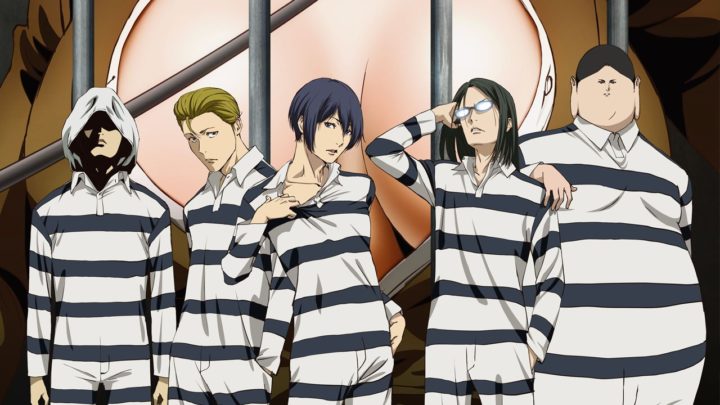
What you need to understand right out of the blocks for “Prison School” (“Purizun Sukūru”) is that this is the blackest comedy you will ever see. Your first clue is the guy at the right end, who reminds one of Little Face from the “Dick Tracy” movie. And, yes, what you see behind them is a barely-covered, completely massive bust line, but more on that later.
The plot: Hachimitsu Academy, one of the strictest girls’ academies in Tokyo (potentially worse than some dictatorial nations), has decided to admit boys into their system. To ‘integrate’ and have a kind of pilot program, five boys are selected to be among the 1000 girls. However, there are severe, yes, draconian, laws in place which punishes even the most minor infractions with a stay in the school’s prison. You betcha; in the center of the school commons is a cinderblock prison. Our cast of troublemakers (left to right): Jouji “Joe” Nezu, Shingo Wakamoto, Kiyoshi Fujino (the hero), Takehito “Gakuto” Morokuzu and Reiji “Andre” Andou are involved in an attempt to peep in the girl’s shower room, completely unaware that their actions are not welcome. Hell, they are not welcome. Well, it goes awry (naturally) and this causes the five boys to be “arrested” and receive an ultimatum: either stay a month in the school’s Prison Block or be expelled. (more…)
Tags: Comedy, Ecchi, Romance, School, Seinen
December 7th, 2016 in Charlotte by The Droid
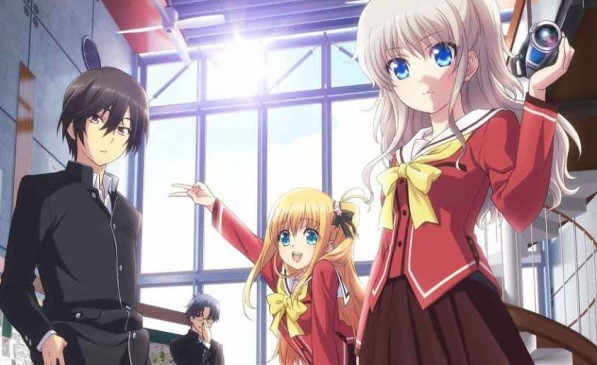
I sometimes have a problem with shows involving people with ‘special abilities’, as it seems to be a free license for them to either be major league perverts or major league megalomaniacs. Although this one does suffer from that conjecture, it is reined in to make for an involving show with some unforeseen consequences. Welcome to the world of “Charlotte” (“Shārotto”).
We are in an alternative universe (although that explanation is not all that necessary, as you will soon see). We focus in on Yuu Otosaka (far left). He has an ‘ability’, which allows him to possess people for about 10 or so seconds. He uses this power to cheat on his exams and it gives the impression that he is Wile E. Coyote (“Super genius”). He transfers into Hinomori High School, where he does well, but falls under the suspicion of Nao Tomori (camera at right) and is forced to take a spot test in the office or risk expulsion. Upon discovering his talent, he is compelled to transfer into a new school (and just when he was putting the moves on Yumi Shirayanagi. the best girl in THIS school! Dangski!) However, Hoshinoumi Academy is no ordinary institute of education; it has gathered numerous ‘ability wielders’ to give them a shot at life. (more…)
Tags: Drama, School, Super Power
October 13th, 2016 in Classroom Crisis by The Droid
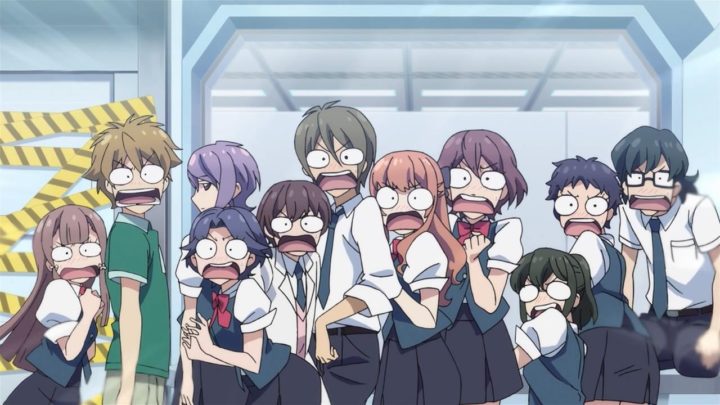
OK, forgive the very anime-troped splash panel, but that does happen in the show. However, that is the least of their problems in “Classroom Crisis” (“Kurasurūmu Kuraishisu”). We find ourselves in the distant future. Not only do we have interplanetary travel, but we have colonies set up on the planets, in this case, Mars. There is a technological giant of a company out there, the Kirishina Corp. They have an academy on Mars, and a specialized class in that academy, named A-TEC (Advanced Technological Development Department, Educational Development Class) which contains especially talented students, spending part of their time in class, and the other part of their time working to develop rocket engines.
This A-TEC group is a guiding and driving force of the company, but it gobbles up a huge amount of resources (like money) at a time when the company has concerns (like money). The story follows the members of the A-TEC class, and their progress on developing a new engine, called the X-3, while dealing with issues related to both being in high school, and being company employees, engineering rockets. (more…)
Tags: School, Sci-Fi
October 11th, 2016 in Brothers Conflict by The Droid
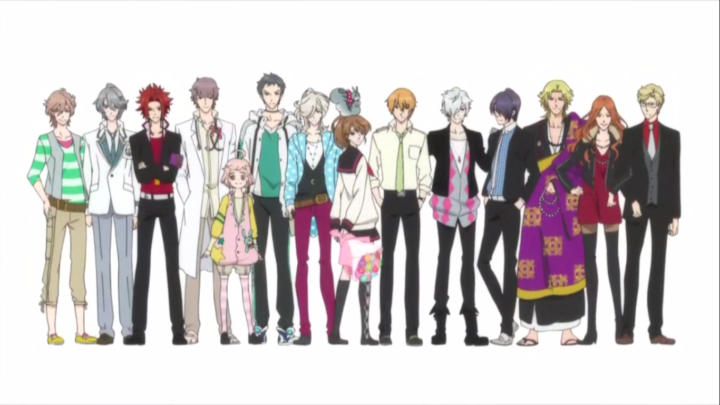
This has got to be the strangest harem show potentially ever conceived (there are a lot of series out there I haven’t seen, so this will suffice for the nonce. Or Nonsense). “Brothers Conflict” (“Burazāzu Konfurikuto”, also known as “BroCon”) tells a rather complicated story, owing to the sheer amount of cast. Ema Hinata (the damsel in the center) is the daughter of the famous expat, Rintaro Hinata (well, how famous is that supposed to be? It’s just a plot point, anyway). One day, Ema finds out that her dad is going to remarry a successful clothing maker, Miwa Asahina. Rather than bothering them, she decides to move into the Sunrise Residence complex that is owned by Miwa. From there, she discovers that she has 13 stepbrothers. Yes, those are all guys up there and the Sunrise Complex isn’t much more than a dorm setting.
Since Ema is an only child and these guys have had zero contact with a girl, much less a sister, the series details this adjustment time to living in a new environment and atmosphere. (more…)
Tags: Harem, Romance, Shoujo
October 9th, 2016 in Gakkōu Gurashi! by The Droid

This was (and is) a difficult show to review, as it is full of ‘Gotcha!’ moments and secrets that if I tell too much, it will take away those moments of discovery when you watch “Gakkōu Gurashi! (“School-Live!” or “Living at School!“). At the very least, I can run down the cast for you, right to left:
Miki Naoki
Kurumi Ebisuzawa
Yuki Takeya
Yūri Wakasa
Megumi Sakura, sometimes called Megu-nee, the teacher. (PS, this is the closest you’ll get to fan service for the show)
Yuki, so very cheerful, along with her friends Kurumi Yūri and Miki, is a member of the Megurigaoka Private High School’s School Living Club. As Yuki seeks out fun school activities every day while living at school, the other girls work to keep her safe, because in reality…………….. (more…)
Tags: Horror, Mystery, Psychological, School, Slice of Life










